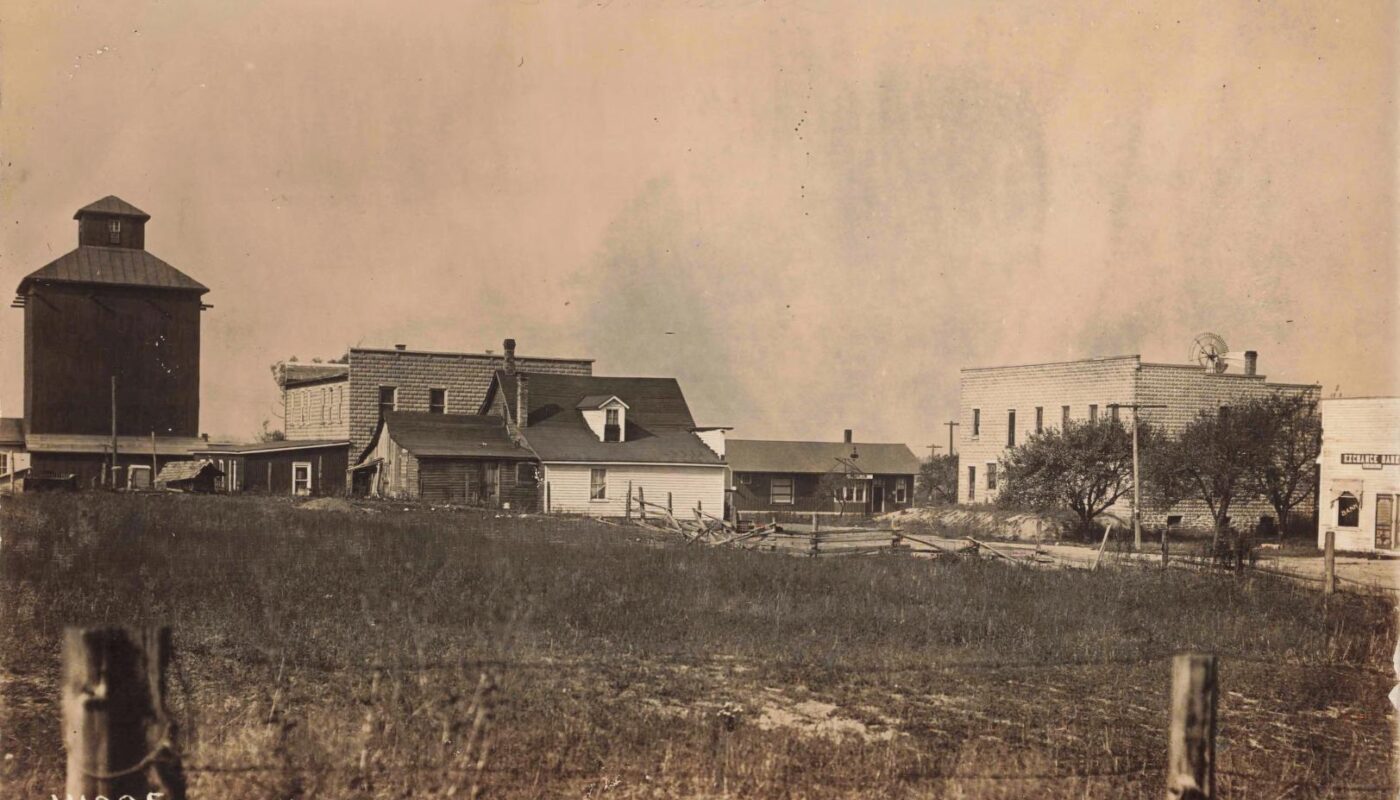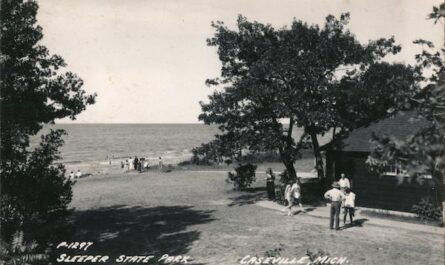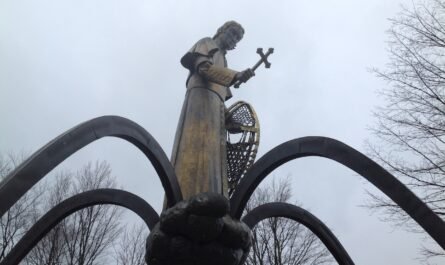The history of McGregor, Michigan, begins when European pioneers lumbered and settled in the rural heart of Sanilac County. Once a hunting and gathering place for the Anishinaabe. With settlements and homesteads, the town grew rapidly. Today, the history of McGregor, Michigan, serves as a vivid reminder of the early rail-era communities in the Thumb region.
Video – McGregor Michigan History: When Trains Were the Internet
A Thumb Region Town Built by Rail and Faith in the Future
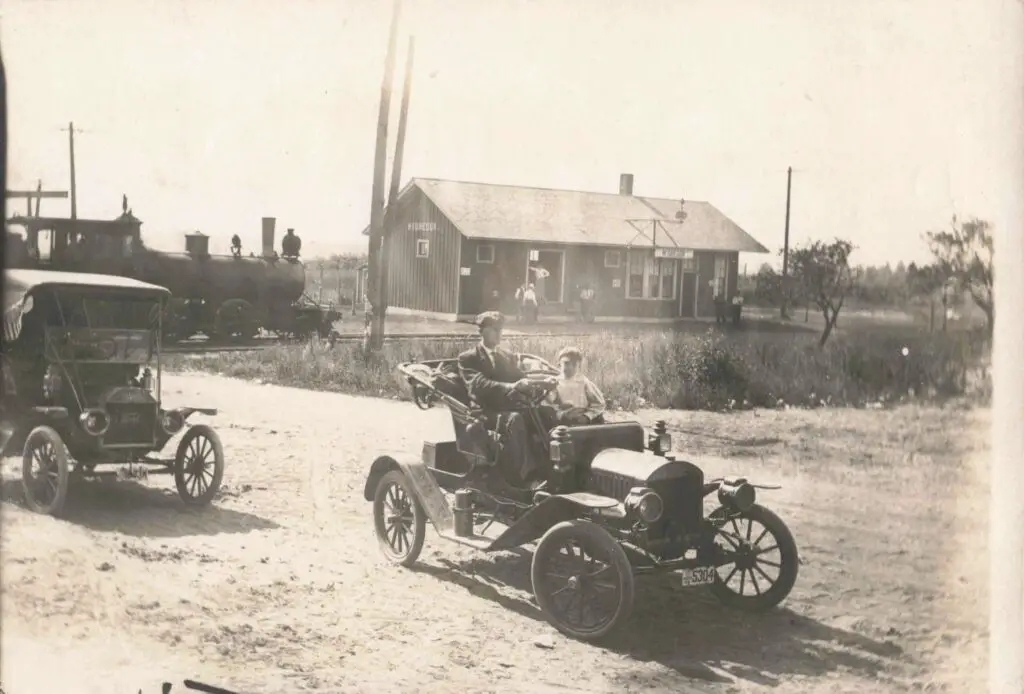
In 1859, a settler named John McGregor arrived in the rolling farm country of northwest Sanilac County and gave his name to a small clearing in the woods. What began as a single homestead became a rail-side stop that linked Michigan’s Thumb region to the outside world. For a time, the trains brought prosperity, mail, and connection to a community that never grew large but left a lasting mark.
The Founding of McGregor
The origins of McGregor, Michigan, trace to John McGregor, who established a homestead and quickly became the namesake of the area. When the Flint and Pere Marquette Railroad extended through Sanilac County, McGregor’s settlement gained new purpose.
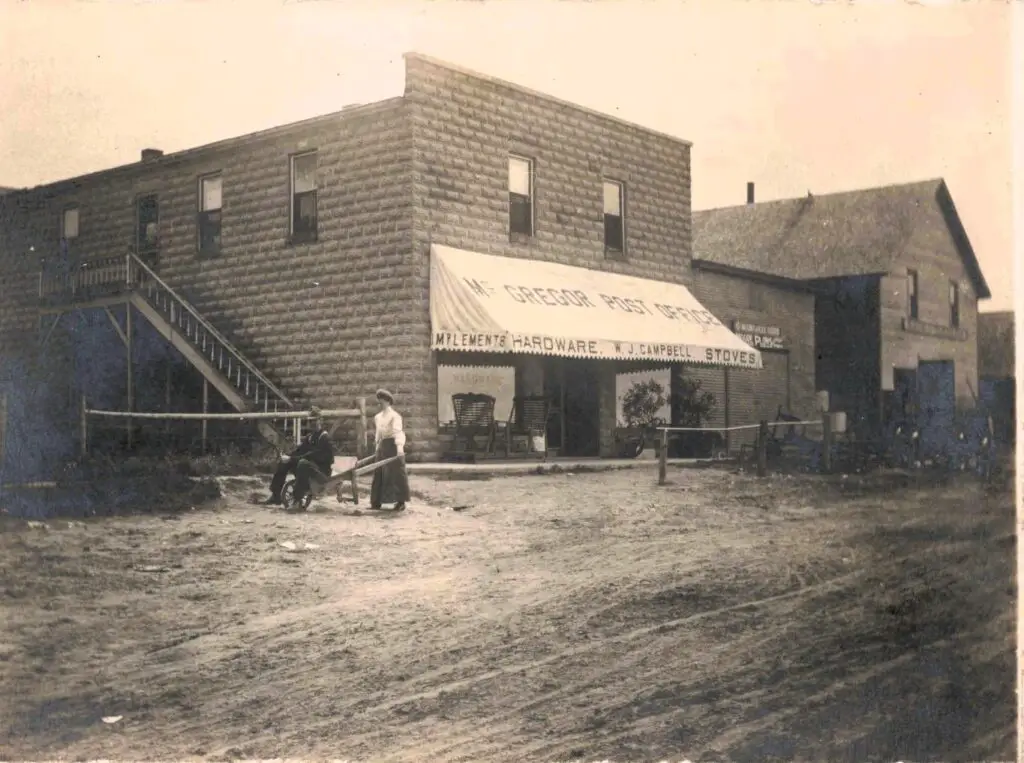
By the 1890s, the town featured a rail depot, post office, and grain elevator, along with stores that served surrounding farm families. The first postmaster, James Powers, was among the driving forces behind the town’s organization. From his small post office, he connected the farms of Bridgehampton Township with the rest of the Thumb.
Commerce on the Rails
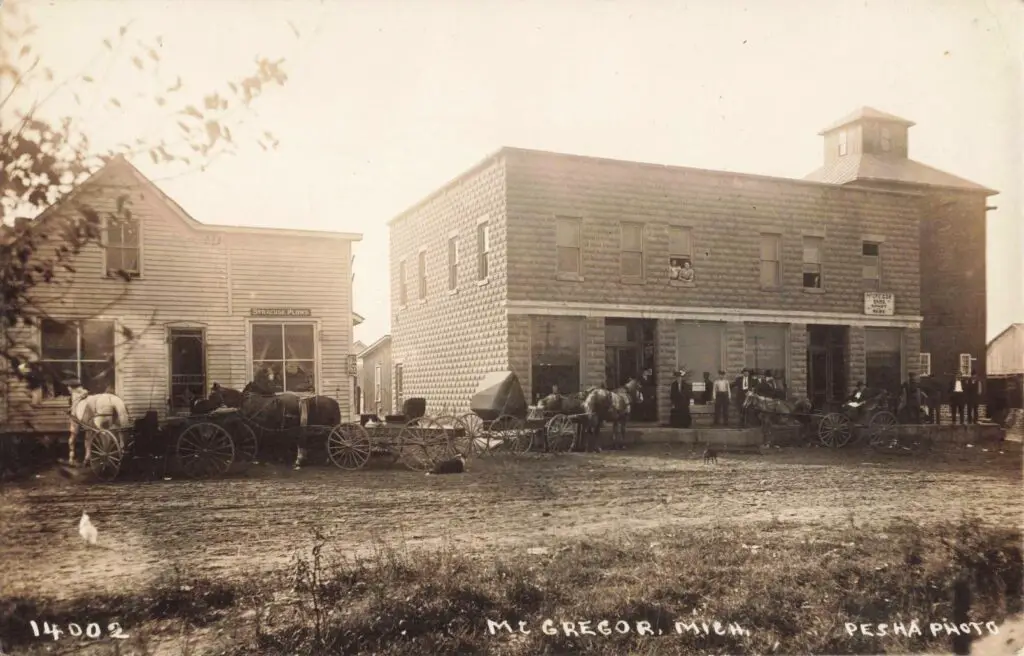
A look at McGregor’s early photographs shows a community centered on work and trade.
The McGregor Brothers Store offered dry goods, clothing, and groceries to farmers who came to town once or twice a week.
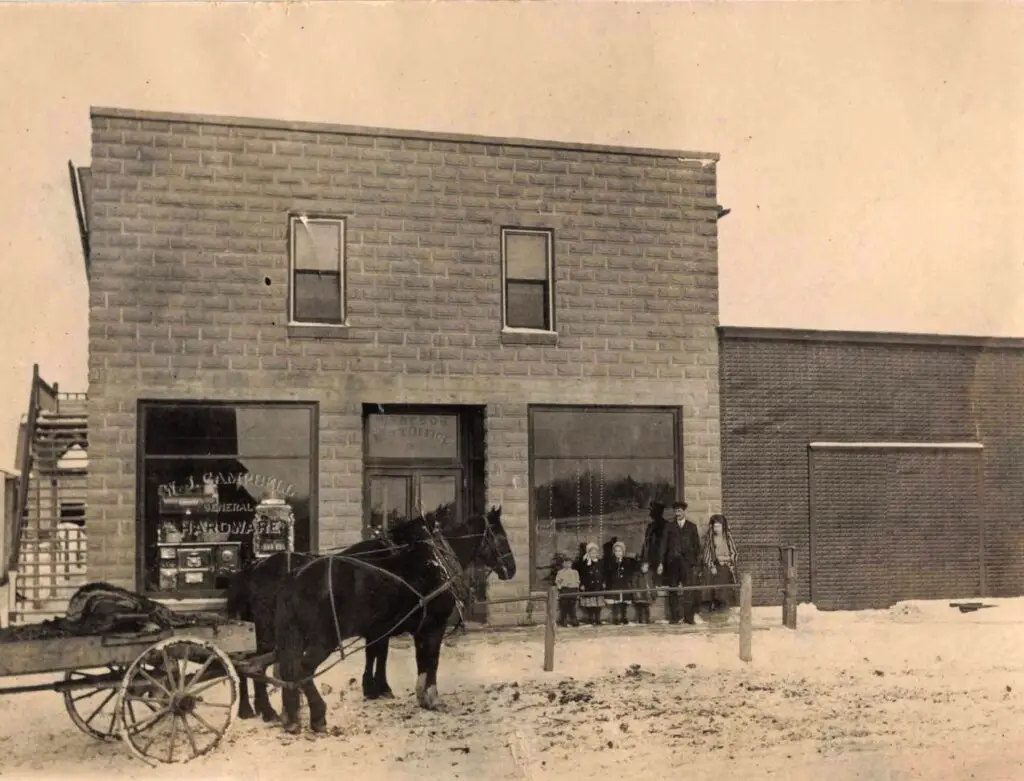
W.J. Campbell’s Hardware Store doubled as the post office, selling tools, nails, stoves, and mail service under the same roof.
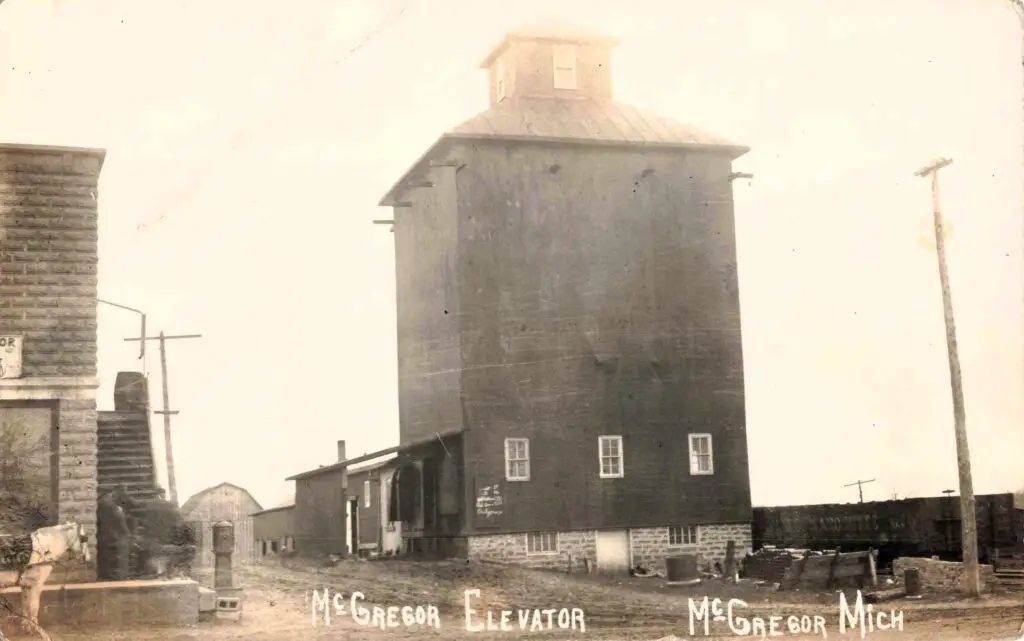
The McGregor Elevator—a tall wooden structure beside the tracks—handled the wheat, oats, and corn that sustained the local economy.
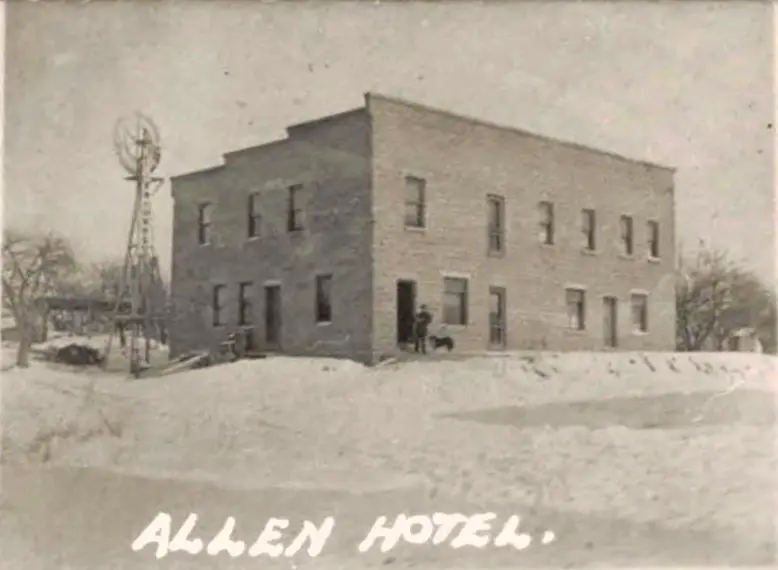
Across the road, the Allen Hotel provided lodging and meals for travelers and railroad workers. It wasn’t fancy, but it gave McGregor a sense of permanence. Farmers could conduct business, ship goods, and find a hot supper before heading home by wagon.
A Small Town with a Big Heart
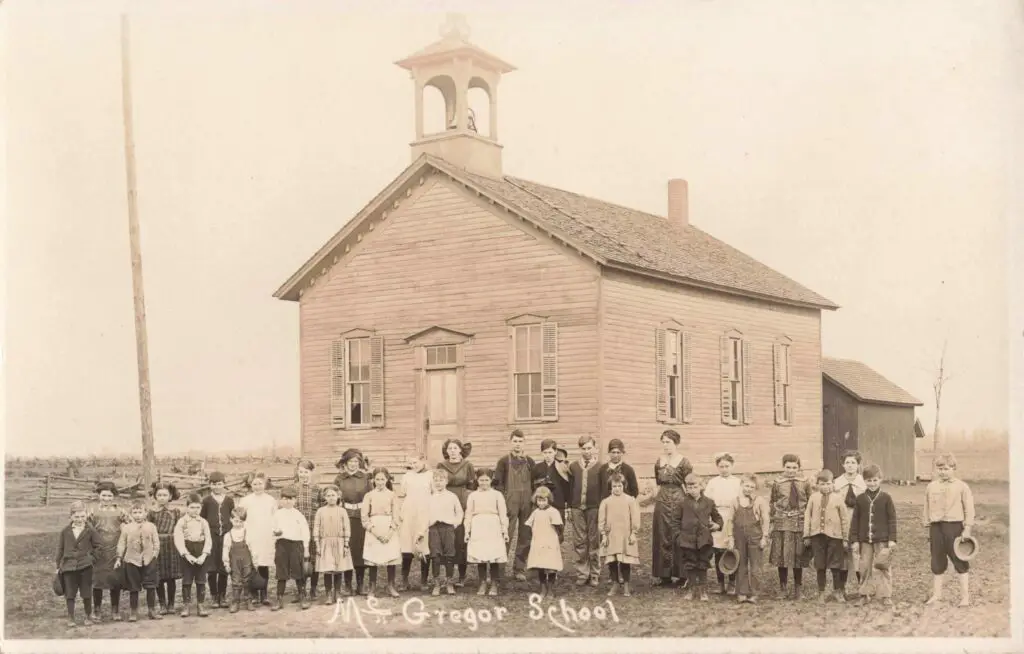
McGregor’s most enduring institution was its one-room schoolhouse, a modest building topped with a bell tower. Generations of children attended there, learning their lessons through blizzards and harvest seasons. On weekends, it became the heart of the community—hosting pie socials, church meetings, and Christmas programs.
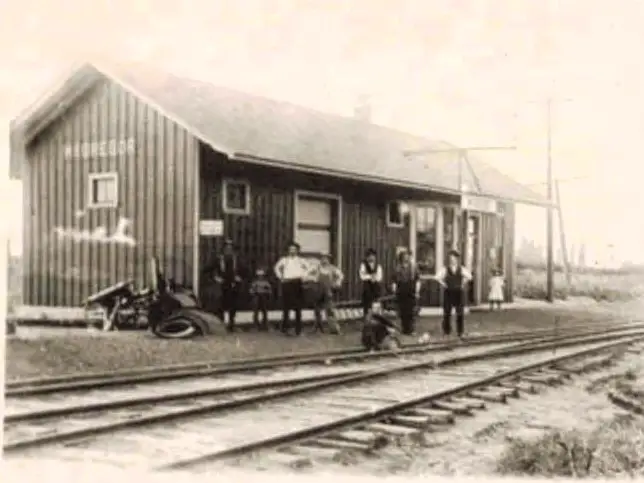
In those days, the railroad was the heartbeat of the town. The train’s whistle marked the day’s rhythm—mail arriving, passengers departing, and farm goods shipped to distant markets. Neighbors gathered outside Campbell’s hardware store to trade stories and share news, while the depot light flickered across the muddy street.
The Slow March of Change
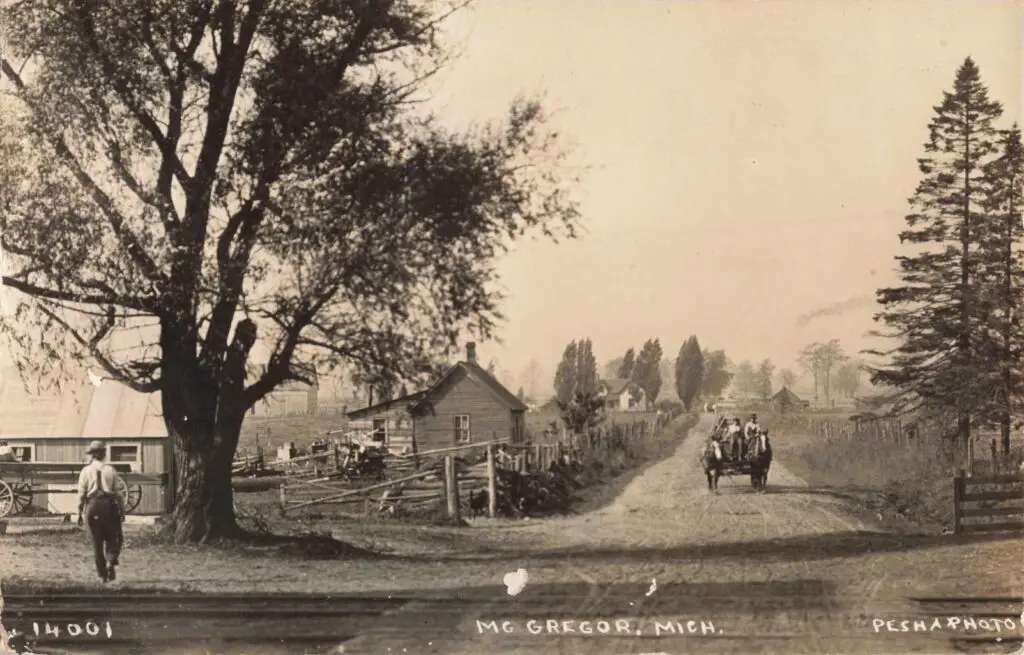
Progress eventually caught up to McGregor. Automobiles and paved highways made it easier to reach larger towns like Deckerville and Sandusky. The train stopped less frequently, and business began to drift away.
By mid-century, the post office had closed, the elevator stood quiet, and the school merged with a neighboring district. The McGregor Post Office, which had operated since 1894, shut its doors in 1958.
Yet McGregor never truly vanished. Families remained on nearby farms, and the old rail line, though silent, still cuts through the fields like a reminder of what once was.
Remembering the History of McGregor Michigan
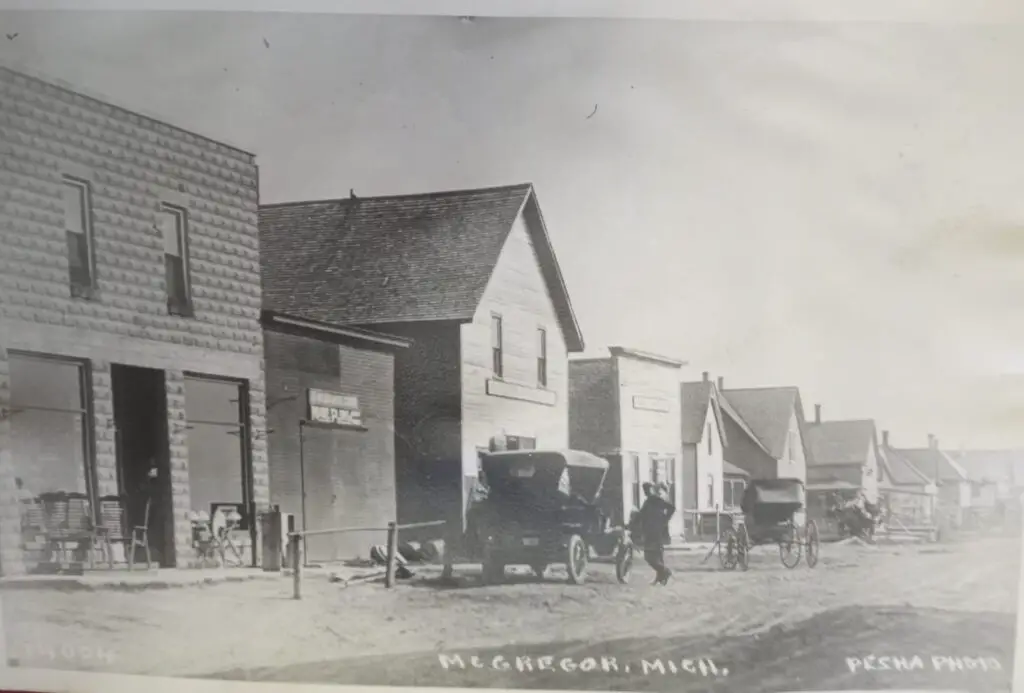
Today, McGregor, Michigan, stands as a symbol of the hundreds of small towns that shaped the Thumb’s history. Founded by a pioneer and sustained by the railroad, it played its part in connecting rural Michigan to the modern world.
The faces in those old photographs—Campbell behind the counter, farmers at the grain elevator, children outside the school—speak of a town that valued work, community, and connection.
McGregor may be quiet now, but its story echoes in the memory of those who built Michigan’s small-town heartland, one stop along the rail at a time.
Works Cited in the History of McGregor Michigan
“Bridgehampton Township History.” Sanilac County Historical Society, 2023.
“McGregor, Michigan (Sanilac County).” Michigan Place Names, compiled by Walter Romig, Wayne State University Press, 1986.
“Pere Marquette Railroad History.” Michigan Railroads & Railroad Companies, 2024.
“Sanilac County Historical Overview.” Michigan GenWeb Project, 2022.
“McGregor Post Office (1894–1958).” Jim Forte Postal History, 2024.
“Michigan Ghost Towns: McGregor.” GhostTowns.com, 2021.
“Sanilac County Plat Maps and Township Records, 1874–1916.” Library of Michigan Digital Collections.
“Historic Map of Layton Corners and McGregor Area.” USGS Historical Topographic Map Explorer, 1916 Edition.
“Pere Marquette Timetable (1909).” Railroad History Archive, Michigan State University.

